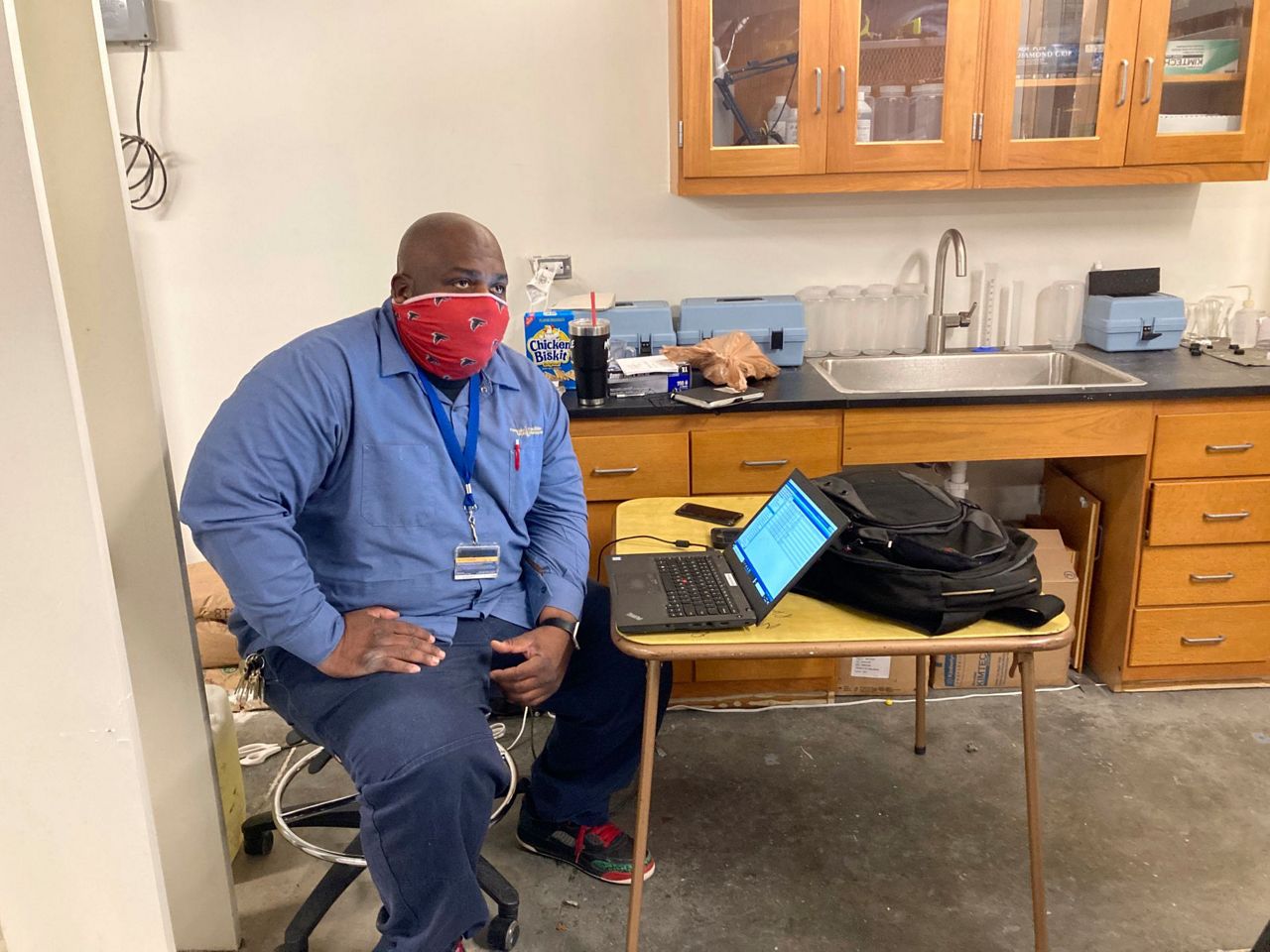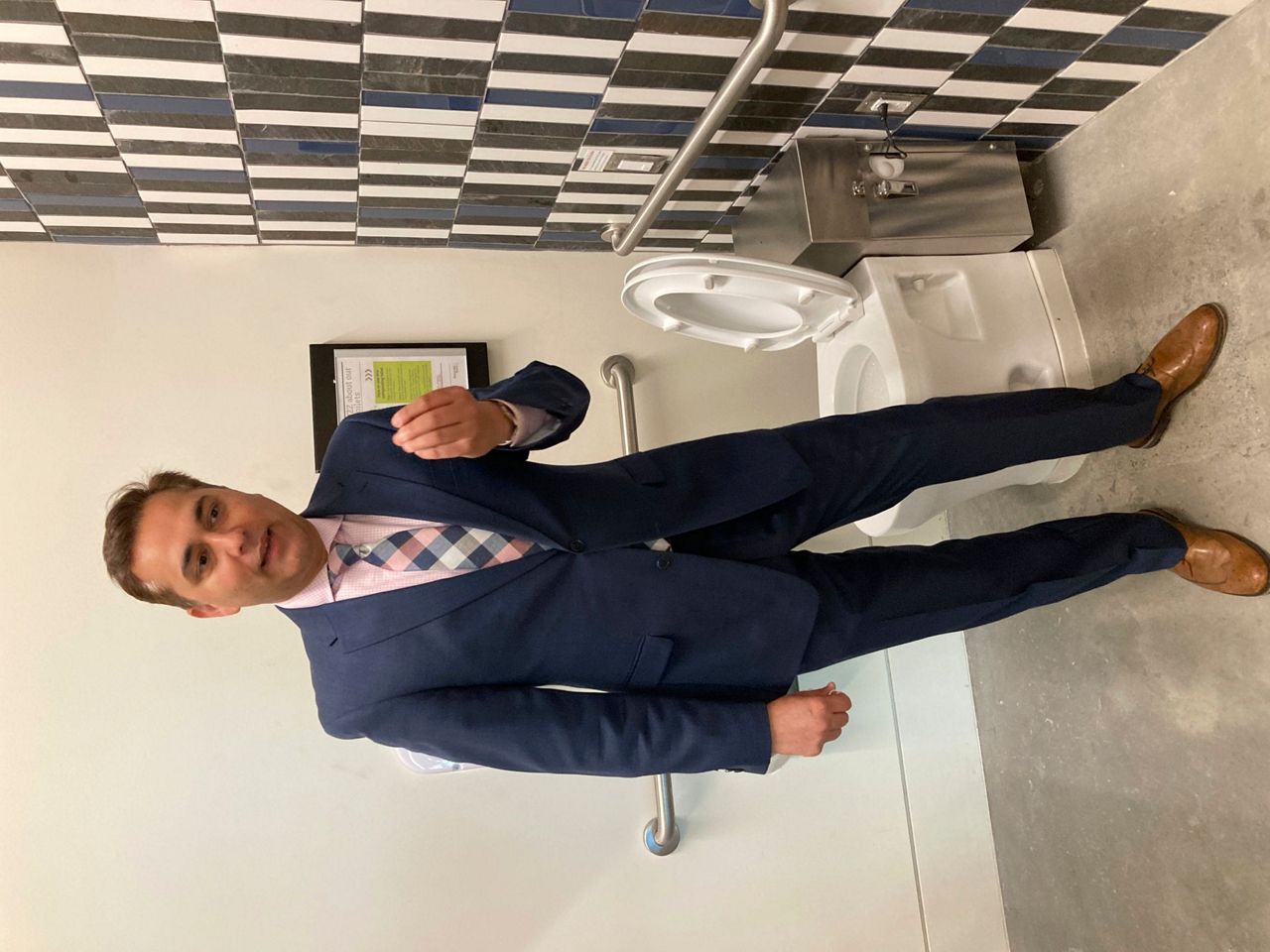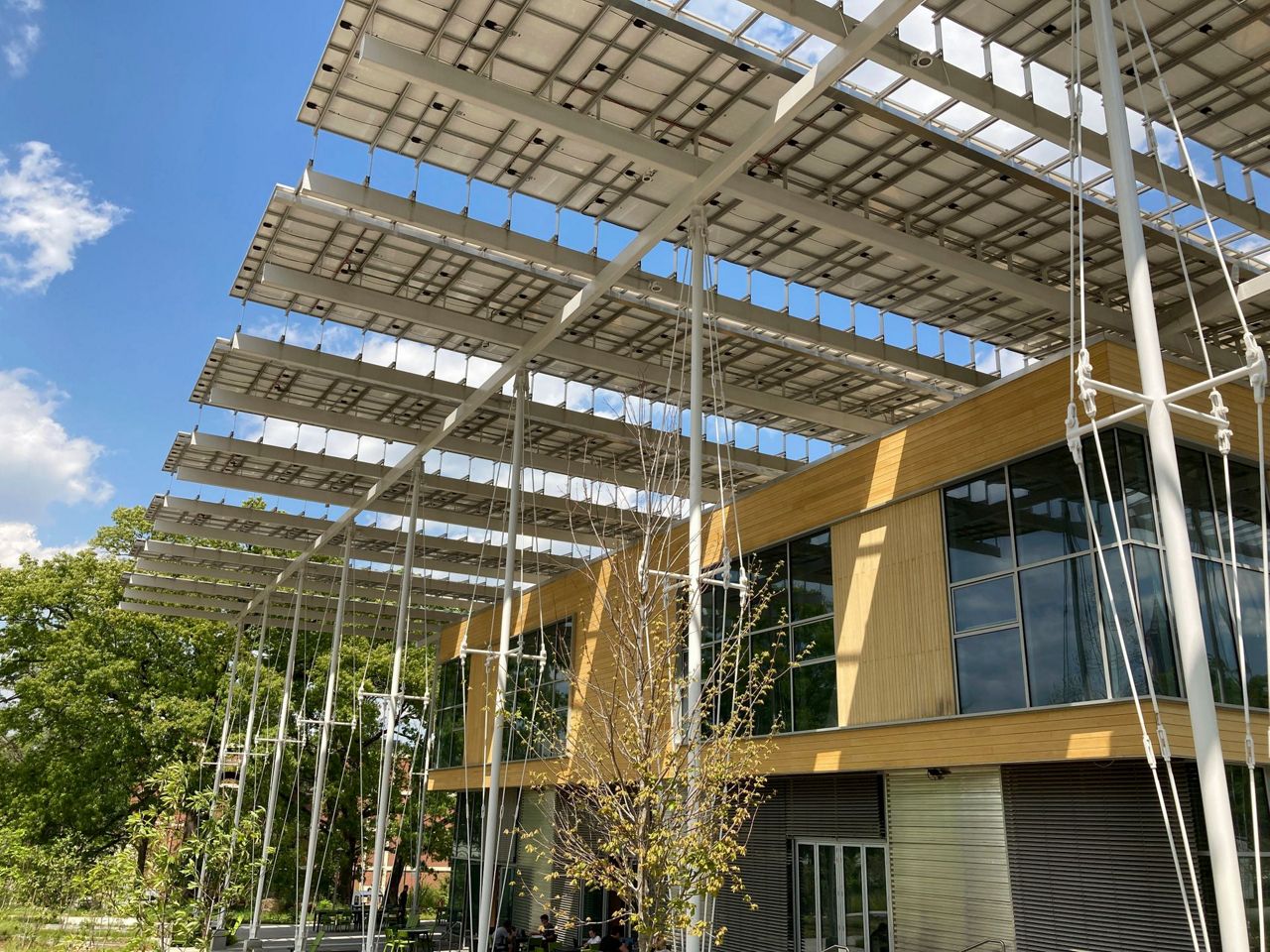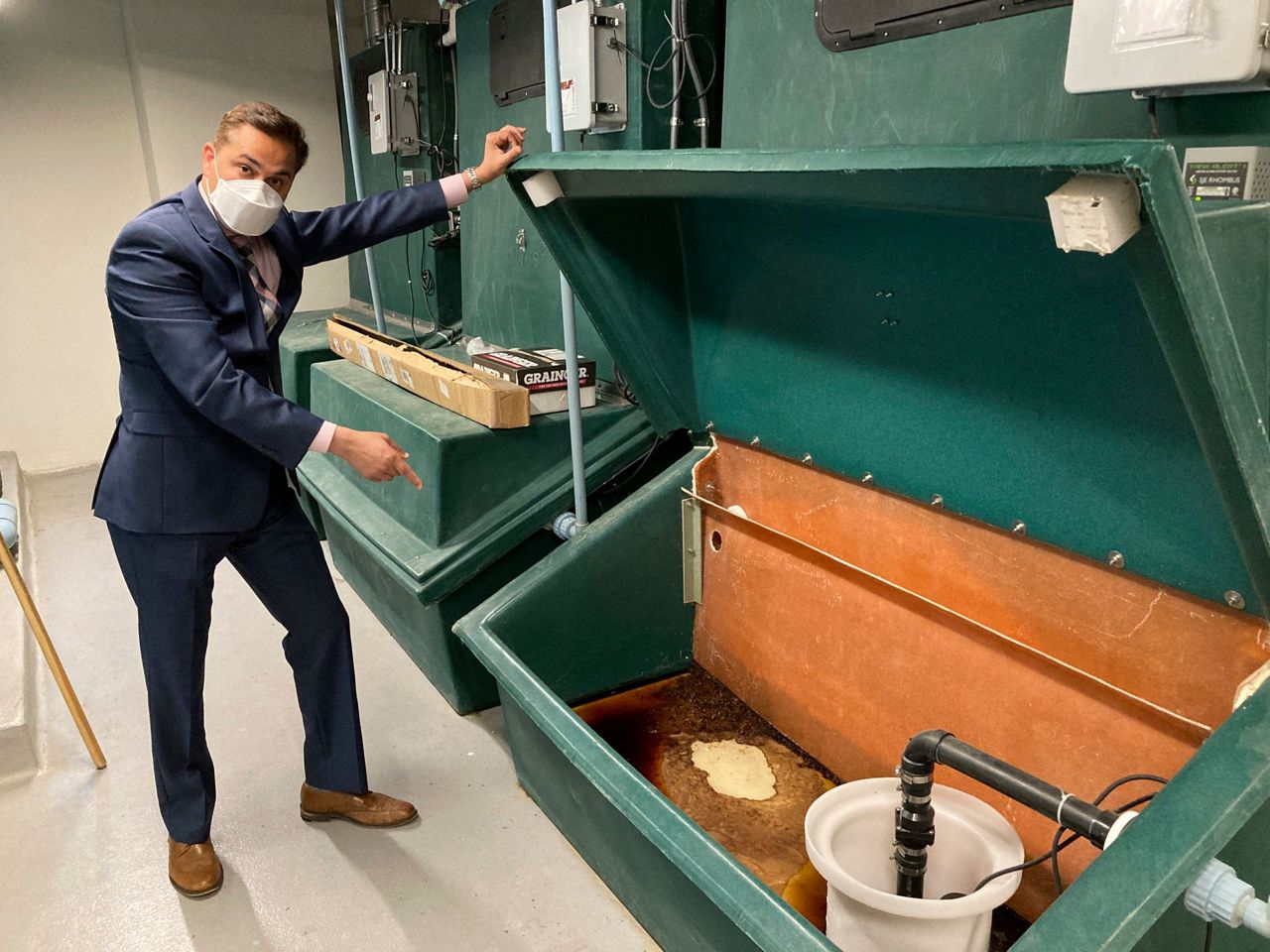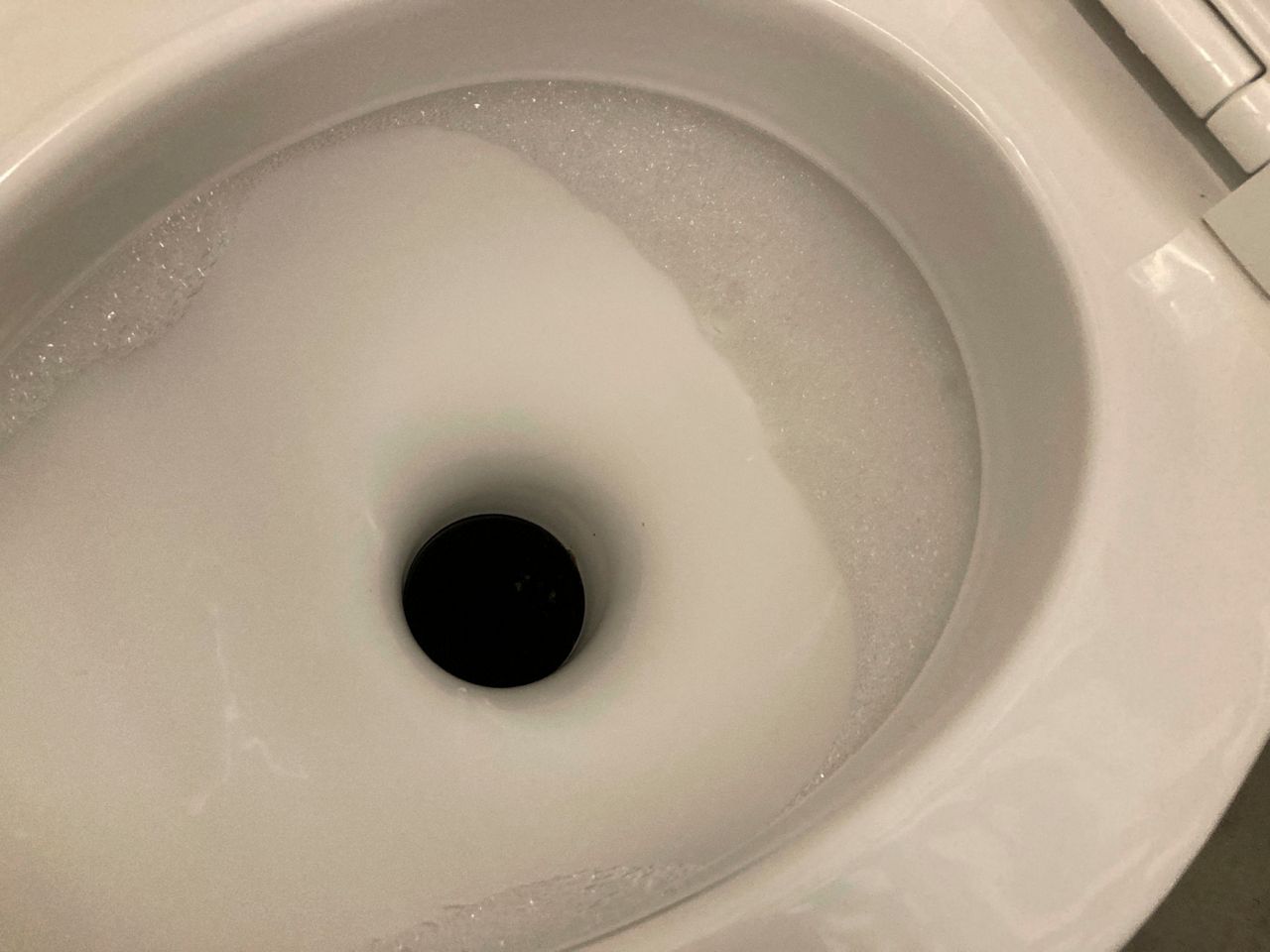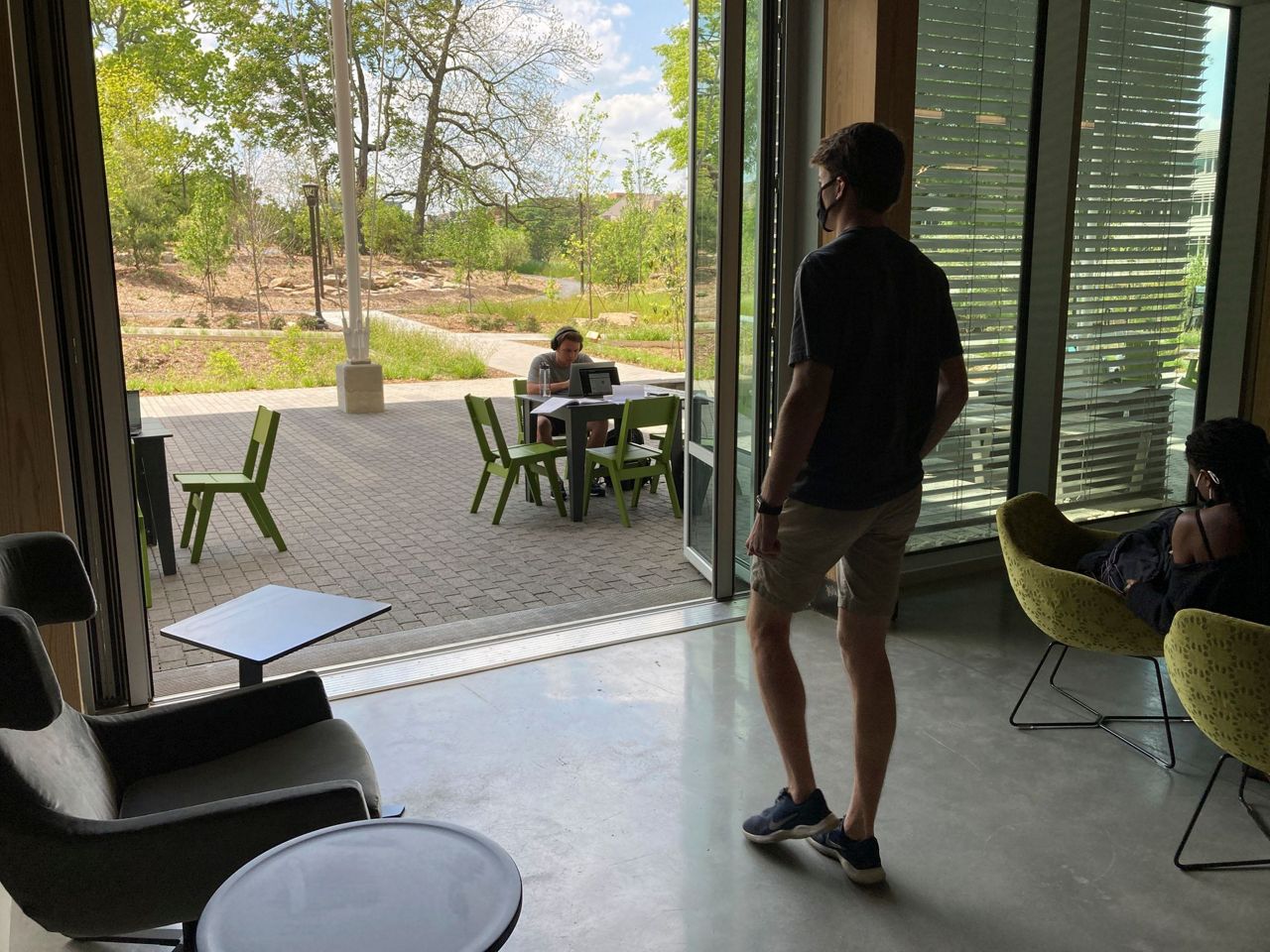ATLANTA (AP) — It's not too often that tours of new buildings start with the toilets. But they're a big part of a different kind of building in Atlanta.
And so, Shan Arora, who oversees Georgia Tech's Kendeda Building, troops visitors pretty quickly to a ground floor bathroom where the toilet begins to hum, and then foam. There's no conventional flushing, with the toilets consuming only a teaspoon of water per use. And the waste is composted in digesters in the basement instead of being piped to a treatment plant.
“We say there’s a lot of potty talk in the Kendeda Building,” Arora said.
Georgia Tech is announcing on Thursday — Earth Day — that the building has won certification as the 28th “living building” worldwide. That means the building has proved over a year of operation that it meets the standards of the International Living Future Institute that it does more good for the natural environment than harm.
“Sustainability gets us to a point where we’re not doing as much damage as we are,” Arora said. “But we’ve already done so much damage that we have to get to a point where we’re regenerative or restorative.”
Paid for by a $25 million donation from the Kendeda Fund, the building is, above all, a demonstration project. It's meant to show that the technology is ready for wider use, especially in a southern environment.
The Kendeda Fund is the private philanthropic arm of Diana Blank, the first wife of Home Depot cofounder Arthur Blank. It also provided $5 million more for programming, to ensure the building gets used to its highest potential.
“Kendeda's goal was not really to build a building,” said the foundation's sustainability advisor, Dennis Creech. “Our goal was to be a catalyst for changing how buildings should be designed.”
More than 5,000 people toured the building while it still was under construction. Creech said it will be impossible to track all the “ripples” from the building, but said he knows of two or three buildings now being designed that have been influenced by the Georgia Tech structure.
The International Living Future Institute says a building should be like a flower, giving more than it takes. It prescribes requirements under seven “petals” — place, water, energy, health and happiness, materials, equity and beauty.
It's the mindset of what's possible that may be the biggest change.
For example, the building does not have conventional air conditioning. Electricity for cooling is typically the heaviest energy demand in the American South, with long, hot, humid summers. Instead, the building mostly relies on dehumidifying the air, making it more comfortable and less sticky while reusing water that is extracted. Designers also focused on keeping inside and outside air separate, meaning the building has few air leaks.
Finally, there is a piping system that can pump cold water through concrete floors to cool the building if it gets above 78 degrees Fahrenheit (25.6 degrees Celsius). But Arora said that even on the hottest days last summer, the cold-water system never turned on, because the building never got that warm.
Dexter Harper, a Georgia Tech air conditioning mechanic who monitors the building's systems, said his coworkers were skeptical about the lack of typical air conditioning.
“When I first started, they said ‘You’re going to burn up at 78 degrees in the summer.' That's the farthest thing from the truth," Harper said.
Not surprisingly, there are solar panels. A large solar canopy shades the building while generating more than twice as much electricity as the building uses.
There's also a focus on excluding materials that designers consider harmful. Even the big glass windows have dimples to warn off birds from accidentally flying into them.
Builders diverted more material from landfills during its construction than new waste it generated, using old tiles from a demolished Georgia Tech building to cover the walls above the humming toilet in the bathroom.
And it means foaming toilets. The building isn't connected to city sewers and is designed to be independent of the water system, too. The building has gone through a long process to get permitted by the state as its own municipal water system, treating rainwater for drinking. The canopy collects rainwater for the treatment system and sends additional water to be slowly released back into the ground, instead of running off into concrete drains.
Beyond that, the focus on health, happiness and beauty makes the building a magnet for students. On Tuesday, biochemistry doctoral students Jay Haynes and Brooke Rothschild Mancinelli were in the rooftop garden, tending the vegetables. It wasn't for research, but just for fun.
“Once you know better is possible, how can you look back?” asked Arora.
___
Follow Jeff Amy on Twitter at http://twitter.com/jeffamy.
Copyright 2021 The Associated Press. All rights reserved. This material may not be published, broadcast, rewritten or redistributed without permission.



